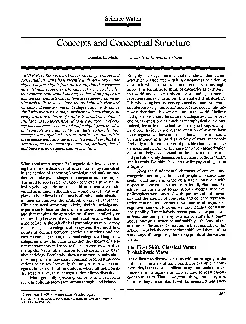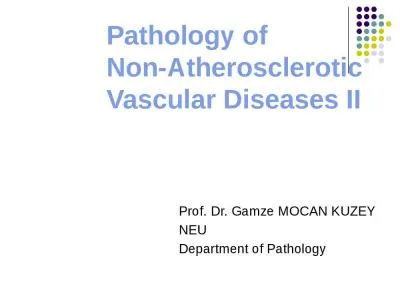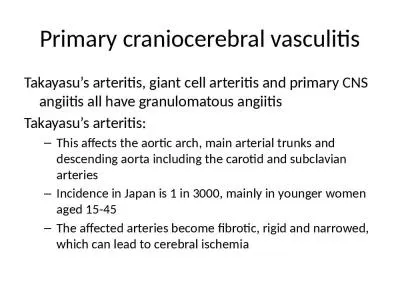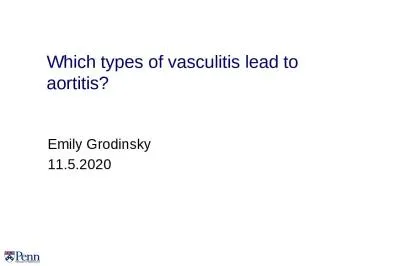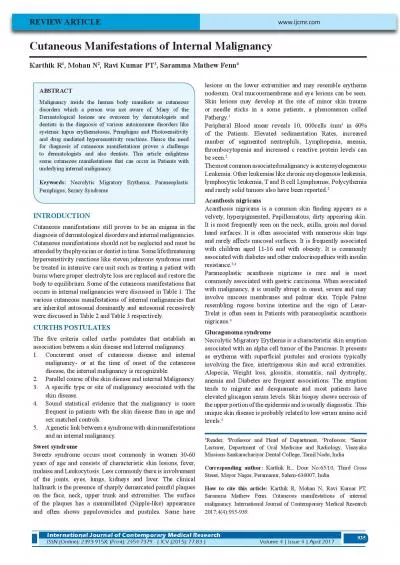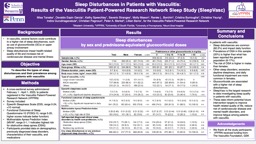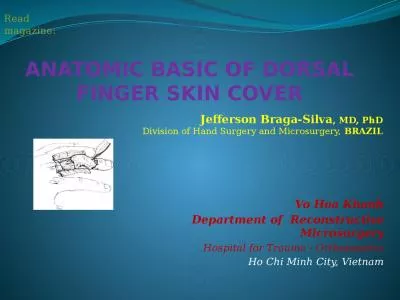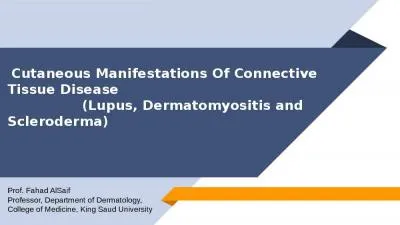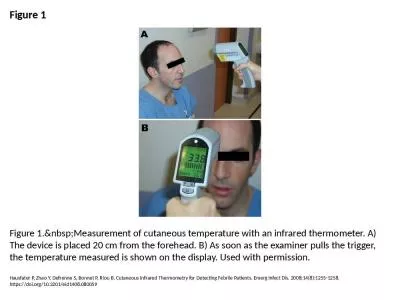PPT-Vasculitis Cutaneous vascular injury can be divided into two basic categories: vasculitis
Author : susan | Published Date : 2023-11-22
Vasculopathy Fibrinoid deposition thrombosis with limited to no inflammation Infiltration of vessel wall by inflammatory cells with otherwise minimal alteration
Presentation Embed Code
Download Presentation
Download Presentation The PPT/PDF document "Vasculitis Cutaneous vascular injury ca..." is the property of its rightful owner. Permission is granted to download and print the materials on this website for personal, non-commercial use only, and to display it on your personal computer provided you do not modify the materials and that you retain all copyright notices contained in the materials. By downloading content from our website, you accept the terms of this agreement.
Vasculitis Cutaneous vascular injury can be divided into two basic categories: vasculitis: Transcript
Download Rules Of Document
"Vasculitis Cutaneous vascular injury can be divided into two basic categories: vasculitis"The content belongs to its owner. You may download and print it for personal use, without modification, and keep all copyright notices. By downloading, you agree to these terms.
Related Documents




